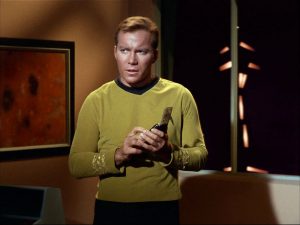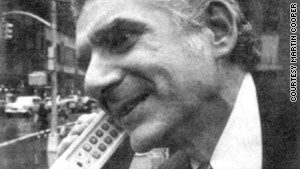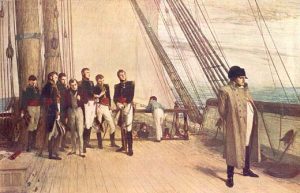Kirk to Enterprise; Beam me up an innovation

Marketers are often asked to come up with the next big thing; however looking into the future isn’t always easy.
One way I have got round this is to ‘ask’ someone who is better at predicting things then I am – a science fiction writer. And who better than Gene Roddenberry?
Michael Cooper is another innovator who drew his inspiration from the same source. After serving in the US Navy, Cooper took a degree in Electrical Engineering at the Illinois Institute of Technology and then joined Motorola where he worked on pagers and then car phones using cellular technology. At this point in time, car phones were ‘mobile phones’ only in the sense that they moved when the car did.
By the early 1970s Cooper was getting worried that Motorola’s great rival, AT&T was gaining a lead in car phone technology.
One night he was watching one of his favourite TV shows, when inspiration struck. Seeing Captain James T Kirk using his communicator to call the Enterprise he had an idea. Could they develop a handheld mobile phone and leapfrog AT&T.
From having the idea, Cooper and his team took only 90 days to create and build the portable cellular 800 MHz phone prototype.

On April 3, 1973, on Sixth Avenue in New York City, in front of a group of journalists Cooper made the first public phone call from their prototype handheld cellular phone.
Who did he call?
His wife?
His mother?
His workmates?
No, he decided that it was too good an opportunity to miss and decided to call Joel Engel.
Engel was head of research at AT&T Bell Labs and Cooper called to tell him all about their new invention.
Cooper would later recall, ‘As I walked down the street while talking on the phone, sophisticated New Yorkers gaped at the sight of someone actually moving around while making a phone call. Remember that in 1973, there weren’t cordless telephones, let alone cellular phones. I made numerous calls, including one where I crossed the street while talking to a New York radio reporter – probably one of the more dangerous things I have ever done in my life.’
And the moral of this story is that innovation can be inspired by fiction, not just fact. Who will you read or watch to get your next big idea?
![Desc: View of Exposition Universelle (Universal Exhibition), Paris, France, 1889, engraving ¥ Credit: [ The Art Archive / Muse Carnavalet Paris / Dagli Orti ] ¥ Ref: AA371361](http://www.theprisonerandthepenguin.com/wp-content/uploads/2017/03/Vue_générale_de_lExposition_universelle_de_1889-300x203.jpg)

 Even after his defeat at the battle of Waterloo the connection to Napoleon continued. Exiled to the remote island of St Helena, in the Atlantic Ocean, legend has it that he was allowed to choose one item of luxury to take with him. It is said that he chose several casks of his beloved Courvoisier cognac and that one day, after dinner with the English officers on board HMS Northumberland, he treated them to a taste .
Even after his defeat at the battle of Waterloo the connection to Napoleon continued. Exiled to the remote island of St Helena, in the Atlantic Ocean, legend has it that he was allowed to choose one item of luxury to take with him. It is said that he chose several casks of his beloved Courvoisier cognac and that one day, after dinner with the English officers on board HMS Northumberland, he treated them to a taste .
 Manish Sharma is a man who recognises that brands need to be the same but different. Not for him is the rigid belief in absolute brand consistency but rather an understanding of the benefits of a looser brand coherency.
Manish Sharma is a man who recognises that brands need to be the same but different. Not for him is the rigid belief in absolute brand consistency but rather an understanding of the benefits of a looser brand coherency. Panasonic’s new Stainmaster washing machine is one example of Indovation in action. Recently launched it has a special wash cycle to tackle curry stains. Panasonic found that existing washing machines on the market were failing to fully get the food off their clothes, which was leading to customer complaints and was slowing market growth.
Panasonic’s new Stainmaster washing machine is one example of Indovation in action. Recently launched it has a special wash cycle to tackle curry stains. Panasonic found that existing washing machines on the market were failing to fully get the food off their clothes, which was leading to customer complaints and was slowing market growth.
 Footnote: McDonald’s famous for how consistent its offer is around actually allows for local variation. Perhaps not too surprisingly, there isn’t any beef on its menu in India and as famously discussed between John Travolta and Samuel L. Jackson in Pulp Fiction the Quarter-Pounder with Cheese is known as the Royale with Cheese in France.
Footnote: McDonald’s famous for how consistent its offer is around actually allows for local variation. Perhaps not too surprisingly, there isn’t any beef on its menu in India and as famously discussed between John Travolta and Samuel L. Jackson in Pulp Fiction the Quarter-Pounder with Cheese is known as the Royale with Cheese in France.